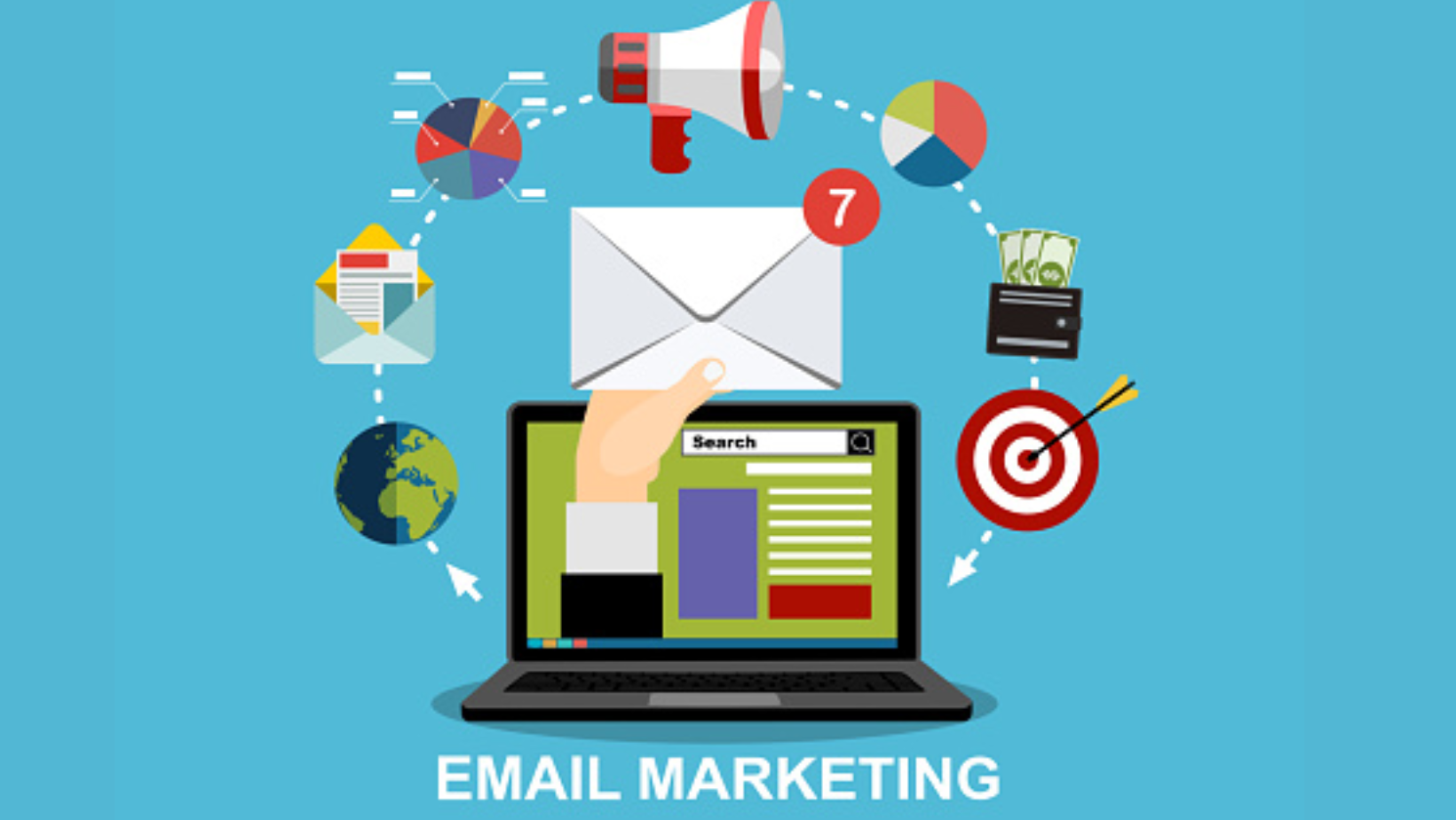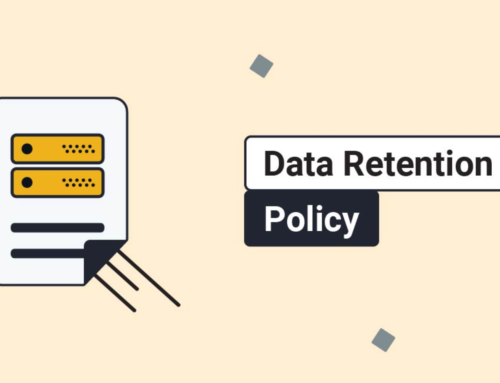Introduction to Zoho Workplace Email Marketing Integration:
In the dynamic landscape of digital marketing, businesses are constantly seeking ways to streamline their operations, enhance productivity, and maximize their outreach to potential customers. One powerful tool that has gained significant traction is Zoho Workplace, a comprehensive suite of business applications designed to empower organizations across various domains.
Understanding Zoho Workplace:
Overview of Zoho Workplace:
Zoho Corporation: A Brief Introduction
Zoho Corporation, founded in 1996 by Sridhar Vembu and Tony Thomas, is a global software company headquartered in Chennai, India. Renowned for providing a suite of cloud-based applications, Zoho has established itself as a key player in the software-as-a-service (SaaS) industry. The company caters to diverse business needs, offering a wide range of applications for communication, collaboration, and productivity. With a customer-centric approach, Zoho has garnered a substantial user base, ranging from small businesses to large enterprises across various industries.
Zoho Workplace Suite: An Overview of Key Applications
Zoho Workplace is an integral part of Zoho Corporation’s comprehensive software ecosystem. It encompasses a suite of applications designed to enhance workplace collaboration, communication, and productivity. The suite includes a variety of tools that cater to different aspects of business operations, providing organizations with a unified platform for their day-to-day activities.
Within the Zoho Workplace Suite, users can find a collection of key applications that streamline various business processes. These applications cover a broad spectrum, from email and document creation to project management and collaboration tools. Zoho Workplace is designed to be versatile, adaptable to the specific needs of different industries and organizational structures.
One of the cornerstone applications within Zoho Workplace is Zoho Mail, a robust email platform that facilitates seamless communication within organizations. Zoho Docs, on the other hand, offers a collaborative workspace for document creation, editing, and sharing. These applications are complemented by Zoho Projects, which aids in efficient project management, and Zoho Cliq, a real-time messaging and collaboration tool.
Zoho Workplace aims to provide a holistic solution for businesses seeking an integrated and user-friendly platform to manage their day-to-day operations. The suite reflects Zoho Corporation’s commitment to empowering businesses through technology, fostering collaboration, and boosting overall workplace efficiency. As organizations increasingly embrace digital transformation, Zoho Workplace emerges as a compelling option for those looking to optimize their work processes in a cohesive and user-centric manner.
Key Features of Zoho Workplace:
Zoho Workplace is a comprehensive suite of productivity tools designed to streamline communication, collaboration, and document management for businesses. Here, we will delve into the key features of Zoho Workplace, breaking them down into distinct paragraphs for a more detailed understanding.
Email Hosting and Collaboration:
Zoho Workplace provides robust email hosting solutions that go beyond basic communication. With personalized email addresses using your domain, users can enjoy a professional and cohesive communication platform. The collaboration aspect enhances teamwork through features like shared calendars, group discussions, and file sharing directly within the email interface. This ensures that communication is not only efficient but also seamlessly integrated with other collaborative elements of the platform.
Document Management and Collaboration:
Efficient document management is crucial for any organization, and Zoho Workplace excels in this area. Users can create, edit, and collaborate on documents in real-time, fostering a collaborative environment. The platform includes version control, ensuring that changes are tracked and can be reverted if necessary. The document management system seamlessly integrates with other Zoho applications, providing a centralized hub for all your organization’s files and facilitating easy access and sharing.
Project Management:
Zoho Workplace goes beyond traditional office tools by offering a robust project management feature. Teams can create, manage, and track projects from start to finish. This includes task assignment, milestone tracking, and progress monitoring. With integrated communication tools, teams can discuss project details directly within the project management interface, reducing the need for external communication platforms and keeping all project-related information in one place.
Messaging and Video Conferencing:
Real-time communication is a cornerstone of effective collaboration, and Zoho Workplace recognizes this with its messaging and video conferencing features. Users can engage in instant messaging, fostering quick and direct communication. Video conferencing takes collaboration to the next level, enabling face-to-face virtual meetings. This is especially valuable for remote teams or organizations with dispersed members, allowing for effective communication without the need for physical presence.
Zoho Office Suite: Word, Spreadsheet, and Presentation tools:
The Zoho Office Suite comprises powerful tools for word processing, spreadsheet analysis, and presentation creation. These tools are fully compatible with industry-standard formats, ensuring smooth collaboration and interchangeability with other applications. The suite is not only feature-rich but also user-friendly, making it accessible for users with varying levels of technical expertise. The seamless integration of these tools into the broader Zoho Workplace ecosystem enhances the overall productivity and collaborative capabilities of teams and organizations.
Zoho Workplace stands out as a versatile and integrated solution for businesses, offering a suite of tools that cover everything from email hosting to project management. Its focus on collaboration and seamless integration between different components makes it a valuable choice for organizations seeking a comprehensive and efficient productivity platform.
The Importance of Email Marketing:
Email marketing plays a pivotal role in modern business strategies, serving as a powerful tool for communication and engagement with customers. Its significance is multifaceted, encompassing several key aspects that contribute to the overall success of a business.
Role of Email Marketing in Business:
Building and Nurturing Customer Relationships:
Email marketing is instrumental in establishing and maintaining strong customer relationships. Through regular communication, businesses can foster a sense of trust and loyalty with their audience. Personalized and relevant content delivered via email helps businesses connect with customers on a more intimate level, strengthening the bond between the brand and its clientele.
Driving Sales and Conversions:
One of the primary objectives of email marketing is to drive sales and conversions. By strategically crafting marketing messages, businesses can influence customer purchasing decisions. Whether through promotional offers, product updates, or exclusive deals, emails serve as a direct and effective channel to encourage recipients to take desired actions, such as making a purchase or signing up for a service.
Measuring and Analyzing Campaign Performance:
Email marketing provides valuable insights into campaign performance through analytics. Businesses can track metrics such as open rates, click-through rates, and conversion rates, allowing them to gauge the effectiveness of their campaigns. This data-driven approach enables continuous improvement, as marketers can refine their strategies based on real-time feedback and adjust their tactics for better results.
Challenges in Email Marketing:
Despite its numerous advantages, email marketing is not without its challenges. Addressing these obstacles is crucial for optimizing the impact of email campaigns.
Deliverability Issues:
One of the persistent challenges in email marketing is ensuring that emails reach their intended recipients. Factors such as spam filters, sender reputation, and content relevance can affect deliverability. Marketers must employ best practices to enhance deliverability, including maintaining a clean and engaged subscriber list, avoiding spammy content, and adhering to email marketing regulations.
Email List Management:
Effectively managing an email list is essential for successful email marketing. Challenges may arise in maintaining accurate and up-to-date subscriber information, segmenting the audience for targeted campaigns, and dealing with unsubscribes. A well-maintained email list ensures that messages reach the right audience, increasing the likelihood of engagement and positive outcomes.
Personalization and Targeting:
Achieving effective personalization and targeting in email campaigns requires a deep understanding of the audience. Marketers need to leverage data insights to create personalized content that resonates with individual recipients. Striking the right balance between personalization and avoiding a sense of intrusion is key, as overly personalized or irrelevant content can lead to disengagement.
While email marketing offers significant benefits for businesses, addressing challenges and adopting best practices is essential to harness its full potential. By focusing on building relationships, driving conversions, and overcoming obstacles, businesses can leverage email marketing as a dynamic and impactful component of their overall marketing strategy.
Zoho Workplace Email Marketing Integration:
Seamless Integration:
Achieving a seamless integration between Zoho Workplace and Email Marketing Tools is a pivotal aspect of streamlining communication and marketing efforts. Zoho Workplace’s integration capabilities allow for a smooth and efficient connection with various Email Marketing Platforms. This integration ensures that businesses can effortlessly sync and manage their email campaigns directly from the Zoho Workplace suite, eliminating the need for disjointed processes and enhancing overall workflow efficiency.
Supported Email Marketing Platforms:
Zoho Workplace’s compatibility extends to a range of widely used Email Marketing Platforms, facilitating a versatile integration experience. Whether businesses leverage popular platforms like Mailchimp, Constant Contact, or others, Zoho Workplace ensures compatibility, enabling users to harness the full potential of their chosen Email Marketing Tools seamlessly within the broader Zoho ecosystem.
Benefits of Integration:
Centralized Data Management:
One of the key advantages of integrating Zoho Workplace with Email Marketing Tools is centralized data management. By consolidating communication and marketing data within a unified platform, businesses can gain a comprehensive view of customer interactions. This centralized approach not only simplifies data accessibility but also enhances the accuracy of customer insights, allowing for more informed decision-making.
Improved Communication and Collaboration:
Integration between Zoho Workplace and Email Marketing facilitates improved communication and collaboration among team members. With shared access to real-time campaign data, teams can collaborate more effectively on strategies, content creation, and campaign optimization. This collaborative environment fosters a cohesive approach to marketing efforts, leading to increased productivity and a stronger alignment between communication channels.
Enhanced Targeting and Segmentation:
The integration enhances targeting and segmentation capabilities by leveraging the combined power of Zoho Workplace and Email Marketing Tools. Businesses can refine their target audience based on comprehensive data, ensuring that marketing messages are tailored to specific segments. This precision in targeting contributes to higher engagement rates and more effective communication, as messages resonate more effectively with the intended audience.
The integration of Zoho Workplace with Email Marketing Tools goes beyond mere connectivity; it empowers businesses with a unified, streamlined approach to data management, communication, and targeted marketing. The seamless integration and the associated benefits contribute to a more efficient and collaborative environment, ultimately driving success in the realm of email marketing.
Setting Up Email Marketing Campaigns in Zoho Workplace:
Setting up email marketing campaigns in Zoho Workplace involves several key steps to effectively reach and engage your target audience. This process can be broken down into three main components: creating and managing contact lists, designing compelling email campaigns, and automating campaigns.
Creating and Managing Contact Lists:
Importing and Organizing Contacts:
One of the first steps in launching a successful email marketing campaign is to import your contact lists into Zoho Workplace. The platform provides a user-friendly interface for importing contacts from various sources, such as CSV files or other email marketing tools. Once imported, you can efficiently organize your contacts based on criteria such as demographics, preferences, or previous interactions.
Segmentation Strategies for Targeted Campaigns:
Zoho Workplace allows you to implement segmentation strategies to target specific groups within your contact lists. By segmenting contacts based on factors like location, behavior, or engagement history, you can tailor your email content to be more relevant and personalized. This targeted approach enhances the effectiveness of your campaigns and increases the likelihood of positive responses.
Designing Compelling Email Campaigns:
Zoho Campaigns: Email Campaign Builder:
Zoho Campaigns provides a powerful Email Campaign Builder that simplifies the process of creating visually appealing and effective email campaigns. This tool offers a drag-and-drop interface, allowing users to design emails without the need for extensive coding knowledge. It includes features like customizable layouts, font options, and multimedia integration, ensuring your emails are not only visually appealing but also align with your brand identity.
Customizing Templates and Personalization:
Customization is key to standing out in crowded inboxes. Zoho Workplace enables users to customize pre-built templates or create personalized designs from scratch. Additionally, the platform supports personalization tokens, allowing you to dynamically insert recipient-specific information into your emails. This level of customization and personalization enhances engagement and builds a stronger connection with your audience.
Automating Campaigns:
Workflow Automation in Zoho Workplace:
Streamlining your email marketing efforts is made possible through workflow automation in Zoho Workplace. You can create automated workflows that trigger specific actions based on user behavior or predefined conditions. For example, you can set up workflows to automatically send follow-up emails to subscribers who opened a previous campaign but didn’t make a purchase. This automation not only saves time but also ensures timely and relevant communication.
Triggered Emails and Drip Campaigns:
Zoho Workplace supports triggered emails and drip campaigns, allowing you to send targeted messages at specific intervals or in response to user actions. Triggered emails can be set up to automatically respond to actions such as website visits or product purchases. Drip campaigns, on the other hand, involve sending a series of pre-scheduled emails to nurture leads or guide subscribers through a specific journey. This automated approach helps maintain consistent communication and keeps your audience engaged over time.
Setting up email marketing campaigns in Zoho Workplace involves a comprehensive approach that spans contact list management, email campaign design, and campaign automation. By leveraging the features and tools provided by Zoho Workplace, businesses can create and execute effective, personalized, and automated email marketing strategies to enhance customer engagement and drive desired outcomes.
Analyzing and Optimizing Email Campaigns:
Email campaigns serve as pivotal tools for businesses to engage with their audience, foster relationships, and drive desired actions. To ensure the effectiveness of these campaigns, a two-fold approach involving the tracking of campaign performance and implementing A/B testing strategies is crucial.
Tracking Campaign Performance:
Metrics and Key Performance Indicators (KPIs)
Understanding the success of an email campaign requires a comprehensive analysis of various metrics and key performance indicators (KPIs). Metrics such as open rates, click-through rates, conversion rates, and bounce rates provide valuable insights into different aspects of campaign performance. These indicators help marketers gauge the impact of their messages and identify areas that need improvement.
Zoho Analytics Integration for In-Depth Analysis
To delve deeper into the data and extract actionable insights, integration with tools like Zoho Analytics proves invaluable. Zoho Analytics provides a robust platform for in-depth analysis, allowing marketers to create customized reports, dashboards, and visualizations. This integration facilitates a holistic view of the campaign’s performance, enabling data-driven decision-making.
A/B Testing Strategies:
Subject Lines, Content, and Design
A/B testing, also known as split testing, is a powerful method for optimizing various elements of an email campaign. Subject lines, content, and design are critical components that can significantly impact engagement and conversion rates. By creating variations and testing them against each other, marketers can identify which elements resonate best with their audience.
Iterative Optimization for Better Results
A/B testing is not a one-time endeavor; rather, it involves an iterative process of refinement. Marketers can continuously optimize their email campaigns by systematically testing and implementing improvements based on the insights gained. This iterative approach ensures that the campaign evolves to meet the changing preferences and behaviors of the target audience, leading to sustained success.
A successful email marketing strategy involves a continuous cycle of analyzing and optimizing campaigns. By tracking performance metrics and leveraging tools like Zoho Analytics for in-depth insights, marketers can make informed decisions. Simultaneously, A/B testing allows for the refinement of key elements such as subject lines, content, and design, leading to continuous improvement and better results over time.
Integrating Zoho Workplace with CRM:
Integrating Zoho Workplace with CRM offers a powerful solution for businesses seeking to enhance their customer relationship management and streamline various aspects of their operations. This integration primarily involves two key components: Zoho CRM and Email Marketing.
Zoho CRM and Email Marketing:
Unifying Customer Data:
Zoho CRM serves as the central hub for customer information, allowing businesses to consolidate and organize data effectively. By integrating Zoho Workplace with CRM, email marketing efforts can leverage this consolidated data. This integration ensures that marketing campaigns are more targeted, as they draw insights from the comprehensive customer profiles stored in the CRM system.
Streamlining Sales and Marketing Processes:
The integration fosters collaboration between sales and marketing teams. Seamless data sharing between Zoho CRM and Email Marketing tools facilitates a more cohesive approach to lead generation and customer engagement. Sales teams can access valuable insights from email campaigns, enabling them to tailor their strategies based on customer responses. This streamlined collaboration enhances overall efficiency and productivity.
Customer Journey Mapping:
Aligning Email Marketing with Sales Funnel:
Customer journey mapping is a crucial aspect of understanding and optimizing the customer experience. Integrating Zoho Workplace with CRM allows businesses to map out the customer journey more effectively. Email marketing campaigns can be aligned with various stages of the sales funnel, ensuring that communication is timely and relevant. This alignment enables a more personalized approach, addressing the specific needs and concerns of customers at each stage of their journey.
Improving Customer Experience:
The ultimate goal of this integration is to enhance the overall customer experience. By mapping customer journeys and aligning email marketing efforts accordingly, businesses can deliver more targeted and meaningful interactions. This not only improves customer satisfaction but also increases the likelihood of conversion. A seamless and integrated CRM and Email Marketing system allows businesses to respond promptly to customer interactions, providing a more positive and cohesive experience throughout the customer lifecycle.
Integrating Zoho Workplace with CRM brings about a holistic approach to managing customer relationships. It combines the power of data consolidation and streamlined processes, enabling businesses to align their marketing efforts with the customer journey. This integration results in a more efficient and personalized approach, ultimately enhancing the overall customer experience and contributing to the success of the organization.
Best Practices for Zoho Workplace Email Marketing Integration
A. Data Security and Compliance:
Ensuring GDPR Compliance:
It is imperative to adhere to the General Data Protection Regulation (GDPR) guidelines when integrating Zoho Workplace Email Marketing. This involves obtaining explicit consent from individuals for data processing and ensuring that their privacy rights are respected. Regular audits and reviews should be conducted to verify compliance with GDPR standards, and any necessary adjustments should be made promptly.
Data Encryption and Access Controls:
Implementing robust data encryption measures and access controls is crucial for safeguarding sensitive information. Encryption protocols should be employed to secure data during transmission and storage. Access controls, such as role-based permissions, should be configured to restrict access to authorized personnel only. This multi-layered approach enhances the overall security posture of the email marketing integration.
B. Regular Training and Updates:
Keeping Teams Informed about New Features:
To ensure optimal utilization of Zoho Workplace Email Marketing, it is essential to keep teams well-informed about new features and updates. Conduct regular training sessions to introduce team members to the latest functionalities, tools, and improvements within the platform. This proactive approach helps teams stay abreast of the evolving capabilities and encourages them to explore innovative ways to enhance their email marketing campaigns.
Continuous Learning for Optimal Utilization:
Foster a culture of continuous learning within the organization to maximize the benefits of Zoho Workplace Email Marketing integration. Encourage team members to engage in ongoing training programs, workshops, and webinars. By investing in continuous education, teams can develop a deep understanding of the platform’s capabilities, allowing them to leverage its full potential for creating effective and targeted email marketing campaigns.
Future Trends and Developments:
Evolving Landscape of Email Marketing:
In recent years, the landscape of email marketing has undergone significant transformations, with the integration of cutting-edge technologies playing a pivotal role. One of the most noteworthy trends is the incorporation of Artificial Intelligence (AI) and Machine Learning (ML) into email marketing strategies. These technologies are revolutionizing the way businesses interact with their audiences through emails. AI algorithms analyze user behavior, preferences, and engagement patterns to deliver personalized and targeted content, thereby enhancing the overall effectiveness of email campaigns.
Additionally, the evolving landscape of email marketing extends beyond AI and ML, encompassing the integration with other emerging technologies. Automation tools, for instance, have become integral in streamlining email marketing workflows. From automated drip campaigns to personalized customer journeys, businesses are leveraging these technologies to optimize their email strategies, saving time and resources while maximizing engagement.
Zoho Workplace Roadmap:
Zoho Workplace, a comprehensive suite of productivity and collaboration tools, is charting an exciting roadmap for the future. The anticipated features and upgrades in the pipeline suggest a commitment to staying at the forefront of industry trends and meeting the evolving needs of users. Zoho’s continuous innovation is geared towards enhancing user experience, productivity, and collaboration within the workplace.
The roadmap for Zoho Workplace includes a focus on seamless integration with emerging technologies, ensuring that users can leverage the latest advancements to boost efficiency and collaboration. Anticipated features may include enhanced communication tools, advanced project management capabilities, and tighter integration with third-party applications, reflecting Zoho’s dedication to providing a holistic and cutting-edge workplace solution.
As businesses navigate an increasingly digital and dynamic landscape, Zoho Workplace’s roadmap becomes a valuable guide for organizations aiming to stay ahead in the rapidly evolving world of productivity and collaboration tools.
Both the evolving landscape of email marketing and the Zoho Workplace roadmap illustrate the dynamic nature of the digital business environment. Businesses that embrace these trends and developments are better positioned to adapt, innovate, and thrive in an ever-changing landscape.
Conclusion:
In conclusion, the integration of Zoho Workplace with email marketing is a game-changer for businesses looking to amplify their digital presence and engage with their audience effectively. By understanding the intricacies of this integration, implementing best practices, and staying abreast of emerging trends, organizations can unlock new realms of marketing potential, driving success in an ever-evolving digital landscape.
Integration is usually straightforward. You can connect Zoho Workplace Email Marketing with your email platform by accessing the integrations settings within the Zoho Workplace dashboard. Common integrations include Gmail, Outlook, and other popular email services.
Integration with Zoho Workplace Email Marketing provides a centralized hub for managing email campaigns alongside other business applications. This streamlines workflow, enhances efficiency, and allows for better coordination between marketing efforts and other business processes.
Yes, Zoho Workplace Email Marketing supports integration with various third-party applications. You can explore the Zoho Marketplace to find and connect additional tools that complement your email marketing strategy.
Yes, Zoho Workplace Email Marketing allows for automation of email campaigns. You can set up workflows, triggers, and schedules to automate various aspects of your email marketing, such as sending personalized emails based on user behavior.
Yes, Zoho Workplace Email Marketing offers robust analytics and reporting tools. You can track metrics like open rates, click-through rates, and subscriber engagement. Integration ensures that these insights can be easily accessed alongside other relevant data within the Zoho ecosystem.
Zoho prioritizes security, and the integration with other applications is designed to be secure. Zoho Workplace follows industry standards for data protection, and users can implement additional security measures, such as two-factor authentication, for added protection.
Zoho Workplace Email Marketing Integration is beneficial for businesses of all sizes that rely on email marketing as part of their communication and outreach strategy. It’s particularly useful for organizations already using the Zoho suite for other business functions.
Zoho Workplace Email Marketing provides tools for effective subscriber management. This includes features like segmentation, tagging, and personalized content, ensuring that emails are targeted and relevant to specific groups of subscribers.
The costs may vary based on your usage, the number of subscribers, and additional features you choose. Zoho typically offers different pricing plans, including a free tier with limited features and paid plans with more advanced functionality. It’s advisable to check the latest pricing information on the Zoho website.







